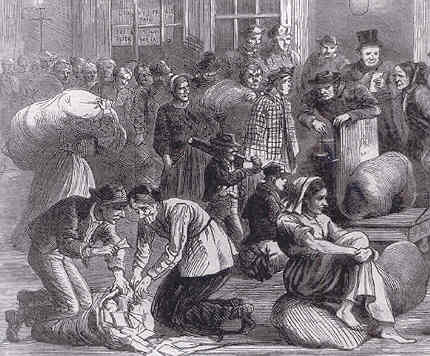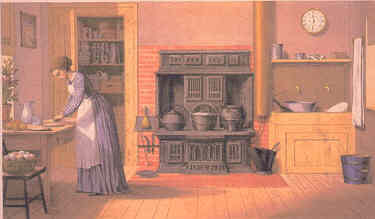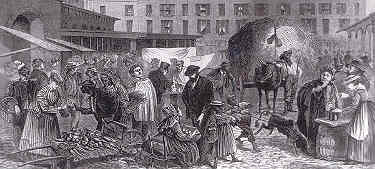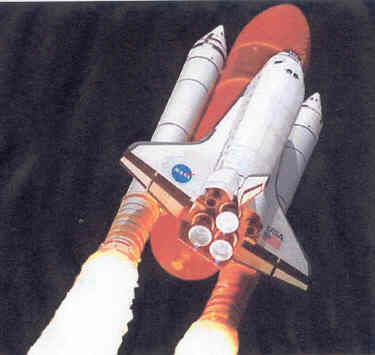Could You---Would You?
If you could go back in time to a different era, would you? Could you have managed the everyday life? Our history has taught us one thing that there is no perfect place on this planet. Yet, that being said at one time or the other, we will read something about the past era's and imagine what in our mind it must have been like. "Oh, I wished I could have lived then," or "Oh, those were the good ole days," We said these phrases or we heard others say them.

A simple fire place, sawbuck table and straw mattress was as far as luxury went on the frontier. Other regions enjoyed abodes, as many city dwellers couldn't afford their own homes and lived instead in boardinghouses and dingy tenement buildings. Many of the poor picked through the rags and trash to exist, this called rag-pickers.
Most of the 1800s the citizens knew nothing or could they have imagined the conveniences that spoil homeowners--- of today. Yet we complain?

Electricity arrived late in the century. So did the telephone. There was no television, radio or stereo, no microwave or flick on a switch for lighting. No! lighting came from candles or from oil or gas lamps. Refrigeration was unknown until the invention of a simple icebox. The kitchen in the summer must have been sweltering. Their water had to be heated over the stove, little wonder that irregular bathing was referred to as Saturday night baths. The typical family didn't own a built-in tub until well into the second half of the century. A round wooden or tin tub was hauled out onto the kitchen floor or into a bedroom and filled with hot water from the fireplace or stove.

The home was a woman's domain or maybe one might describe as her confinement. She did all the chores by hand. The wash, cleaning. Just imagine making all your family's clothes by hand, and then preserving of the food and cooking all the meals from scratch.
At that time a publication, "The Frugal Housewife" by Mrs Child was widely used for its household tips: The following was published in 1836, in "The American Frugal Housewife."
• Always see that beef and pork are always under brine; and that the brine is sweet and clean.
• Eggs will keep almost any length of time in lime-water properly prepared. One pint of course salt, and one pint of unslacked lime, to a pailful of water. If there be to much lime, it will eat the shells from the eggs. They should be kept covered with lime-water, and in a cool place. They can be kept perfectly sweet and fresh at the end of three years...
• New England Rum, constantly used to wash the hair, keeps it very clean, and free from disease, and promotes its growth a great deal more than Macassar oil.
• Honey mixed with pure pulverized charcoal is said to be excellent to cleanse the teeth, and make them white. Limewater with a little Peruvian bark is very good to be occasionally used by those who have defective teeth, or offensive breath.
Many European travelers complained bitterly of the awful food that the Americans ate. Some said that it would certainly injure the stomach. "In the morning at breakfast they deluge their stomach with a quart of hot water, impregnated with coffee and they swallow that with half-baked bread soaked in butter and slices of salt or hung beef."
Foods:
Cracklin' Bread: Corn bread mixed with the residue of fried hog fat.
Beef Dodger: A corn cake filled with minced beef, eaten through out the century.
Chicken Fixins: Chicken was eaten fried, or in stews, pies. The fixins, implied to dressing or any added combinations that were left over that could not be preserved---no food was wasted.
Oysters: Hugely popular nationwide from 1810-1870. They were sold in the streets, in saloons with drinks, they were broiled, boiled, deviled, curried, fricasseed, fried, scalloped, steamed, stewed and tossed into omelette's and many other dishes. Oysters were the center attraction of many wealthy parties.
Mock Oysters: Imitation oysters made from a mixture of corn, eggs, butter and flour fried in oil, were concocted in the South during the Civil War. This was a substitute for those that had very little provisions.
For those that had homes, root cellars were a place under the house or dug out in a hill, where turnips, cabbages, carrots, potatoes, squash and onions could be kept relatively fresh throughout the winter.
Occupations:
In the 1800s, four-fifths of all Americans worked on farms. The second half of the century, many abandoned farm life to work in the city. Some of these people found a better way of life but many others became disillusioned.
About forty thousand women were working full-time jobs in New York around 1870. Most sewed garments. Yet, all had one thing in common, they were paid a fraction of what the men received. The abuse to working woman were bad, but those of the children were even worse. Despite child labor laws, tens of thousands of children could be found working in shops and factories, sometimes for ten and twelve hours per day, for negligible pay.
Many men turned to being "Street Vendors," hawking a wide variety of boods. It was common to hear daily vendor cries:
Fish: Fishmongers with carts shouted, "Fresh fish fit for the pan," or "Shad! buy shad!" "Here comes the fishman bring out your dishpan, Porgies at five cents a pound." This was sometimes folloed by the blowing of a tin horn.
Fruits & Berries: When in season, fruits and berries were hawked with the cry; "Raaaaaaspberrrries! Blaaaaaackberrrries!"
Pepperpot: Women hawked kettles of stew from carts, with shouts---"Pepperpot, righthot!" "All hot come buy my pepperpot!"
Milk" Sold early in the morning on city streets, with cries of "milk---fresh milk!"
Now please don't get me wrong, there were many new inventions, and without those simple but great people like Edison, Wright Brothers and many more we would not be enjoying the life that we live today.
Oh yes, I stand there and impatiently tap my foot waiting for the micro-wave to take thirty-five seconds to re-heat my cup of cappuccino. Then standing in line at the super market with a big cart full of prepared meals----that's just plain ridiculous.
No! my dear friends as my Cajun Grandfather who lived 100 years of this life, said many times---"Man or Animals do not walk backwards. I have learned from the past but it's the future that I look forward to.

• WE KNOW WHAT WE ARE, BUT KNOW NOT WHAT WE MAY BE ---William Shakespeare




